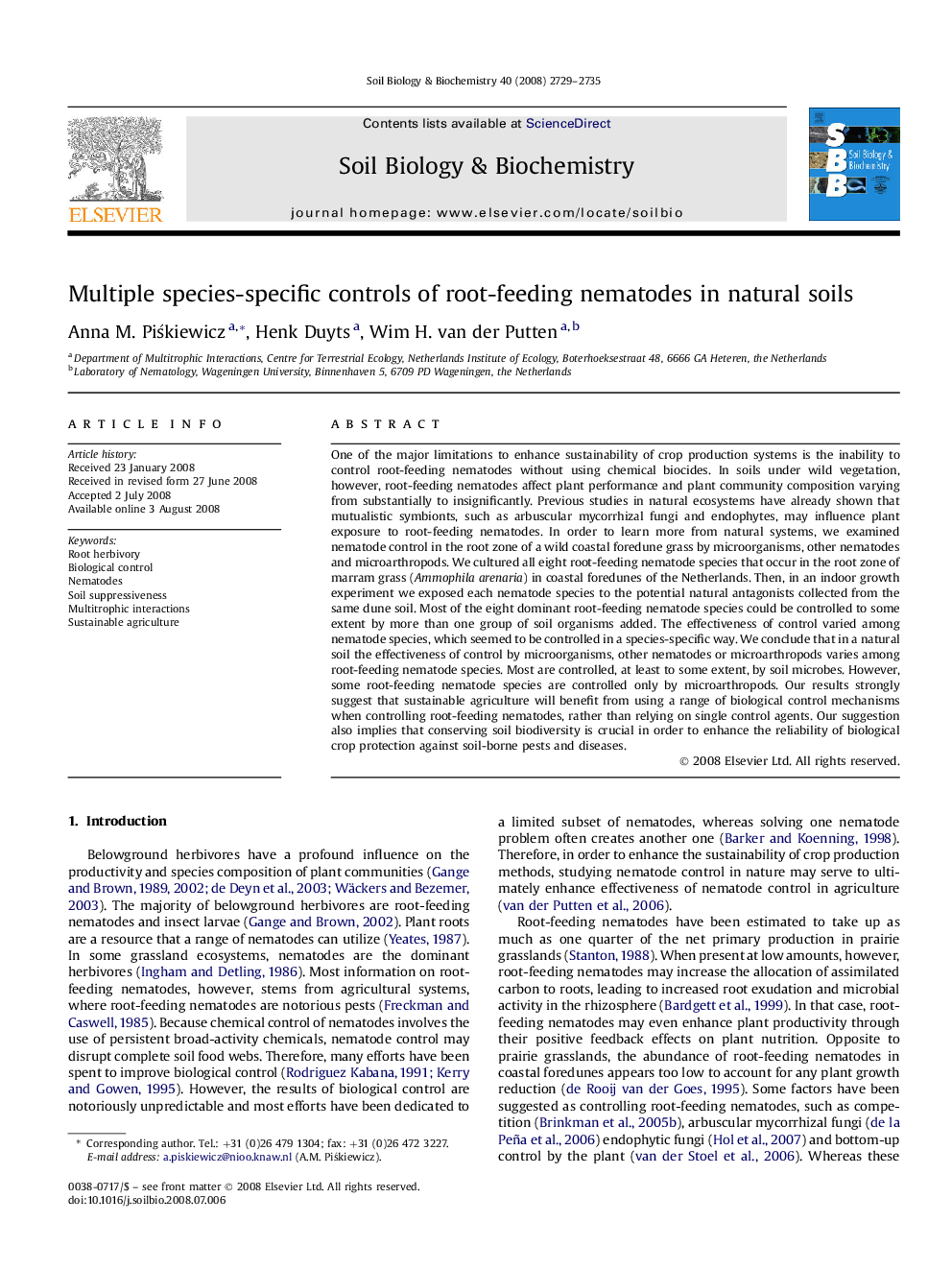| Article ID | Journal | Published Year | Pages | File Type |
|---|---|---|---|---|
| 2026833 | Soil Biology and Biochemistry | 2008 | 7 Pages |
One of the major limitations to enhance sustainability of crop production systems is the inability to control root-feeding nematodes without using chemical biocides. In soils under wild vegetation, however, root-feeding nematodes affect plant performance and plant community composition varying from substantially to insignificantly. Previous studies in natural ecosystems have already shown that mutualistic symbionts, such as arbuscular mycorrhizal fungi and endophytes, may influence plant exposure to root-feeding nematodes. In order to learn more from natural systems, we examined nematode control in the root zone of a wild coastal foredune grass by microorganisms, other nematodes and microarthropods. We cultured all eight root-feeding nematode species that occur in the root zone of marram grass (Ammophila arenaria) in coastal foredunes of the Netherlands. Then, in an indoor growth experiment we exposed each nematode species to the potential natural antagonists collected from the same dune soil. Most of the eight dominant root-feeding nematode species could be controlled to some extent by more than one group of soil organisms added. The effectiveness of control varied among nematode species, which seemed to be controlled in a species-specific way. We conclude that in a natural soil the effectiveness of control by microorganisms, other nematodes or microarthropods varies among root-feeding nematode species. Most are controlled, at least to some extent, by soil microbes. However, some root-feeding nematode species are controlled only by microarthropods. Our results strongly suggest that sustainable agriculture will benefit from using a range of biological control mechanisms when controlling root-feeding nematodes, rather than relying on single control agents. Our suggestion also implies that conserving soil biodiversity is crucial in order to enhance the reliability of biological crop protection against soil-borne pests and diseases.
